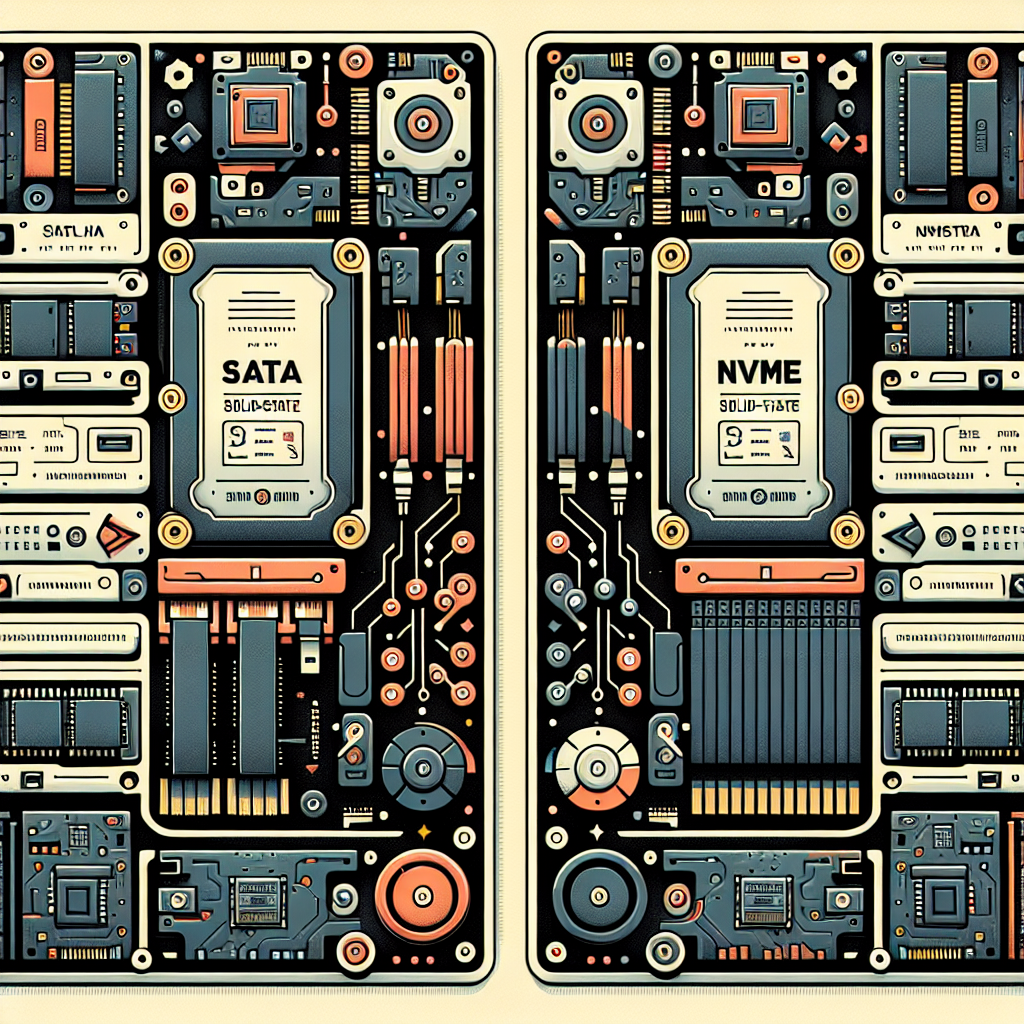Your cart is currently empty!
Exploring the Differences Between SATA and NVMe Solid-State Drives

Solid-state drives (SSDs) have become increasingly popular in recent years due to their faster speeds and improved reliability compared to traditional hard disk drives (HDDs). When it comes to SSDs, two common types are SATA and NVMe. While both types of SSDs serve the same purpose of storing data, there are significant differences between SATA and NVMe SSDs that are worth exploring.
One of the main differences between SATA and NVMe SSDs is the interface they use to connect to a computer. SATA SSDs use the Serial ATA interface, which has been around for many years and is commonly found in both SSDs and HDDs. SATA SSDs typically have a maximum data transfer speed of around 600 MB/s, which is significantly faster than HDDs but slower than NVMe SSDs.
On the other hand, NVMe SSDs use the Non-Volatile Memory Express (NVMe) interface, which was specifically designed for SSDs to take advantage of the faster speeds offered by flash storage. NVMe SSDs can achieve data transfer speeds of up to 3500 MB/s, making them significantly faster than SATA SSDs. This is especially beneficial for tasks that require high-speed data transfer, such as video editing or gaming.
Another key difference between SATA and NVMe SSDs is the number of lanes they use to communicate with the computer. SATA SSDs typically use a single lane, while NVMe SSDs can use multiple lanes simultaneously. This allows NVMe SSDs to achieve even faster data transfer speeds, especially when used in RAID configurations or with multiple drives.
In terms of physical size, both SATA and NVMe SSDs come in a variety of form factors, including 2.5-inch, M.2, and U.2. However, NVMe SSDs are more commonly found in the smaller M.2 form factor, which is ideal for laptops and small form factor PCs due to its compact size.
When it comes to pricing, SATA SSDs are generally more affordable than NVMe SSDs, making them a popular choice for budget-conscious consumers. However, the faster speeds and improved performance of NVMe SSDs make them worth the investment for users who require high-speed data transfer and processing capabilities.
In conclusion, while both SATA and NVMe SSDs serve the same basic purpose of storing data, there are significant differences between the two in terms of speed, interface, and performance. Ultimately, the choice between SATA and NVMe SSDs will depend on the specific needs and budget of the user. For everyday use and general computing tasks, a SATA SSD may be sufficient. However, for users who require high-speed data transfer and processing capabilities, NVMe SSDs offer a significant performance boost.

Leave a Reply